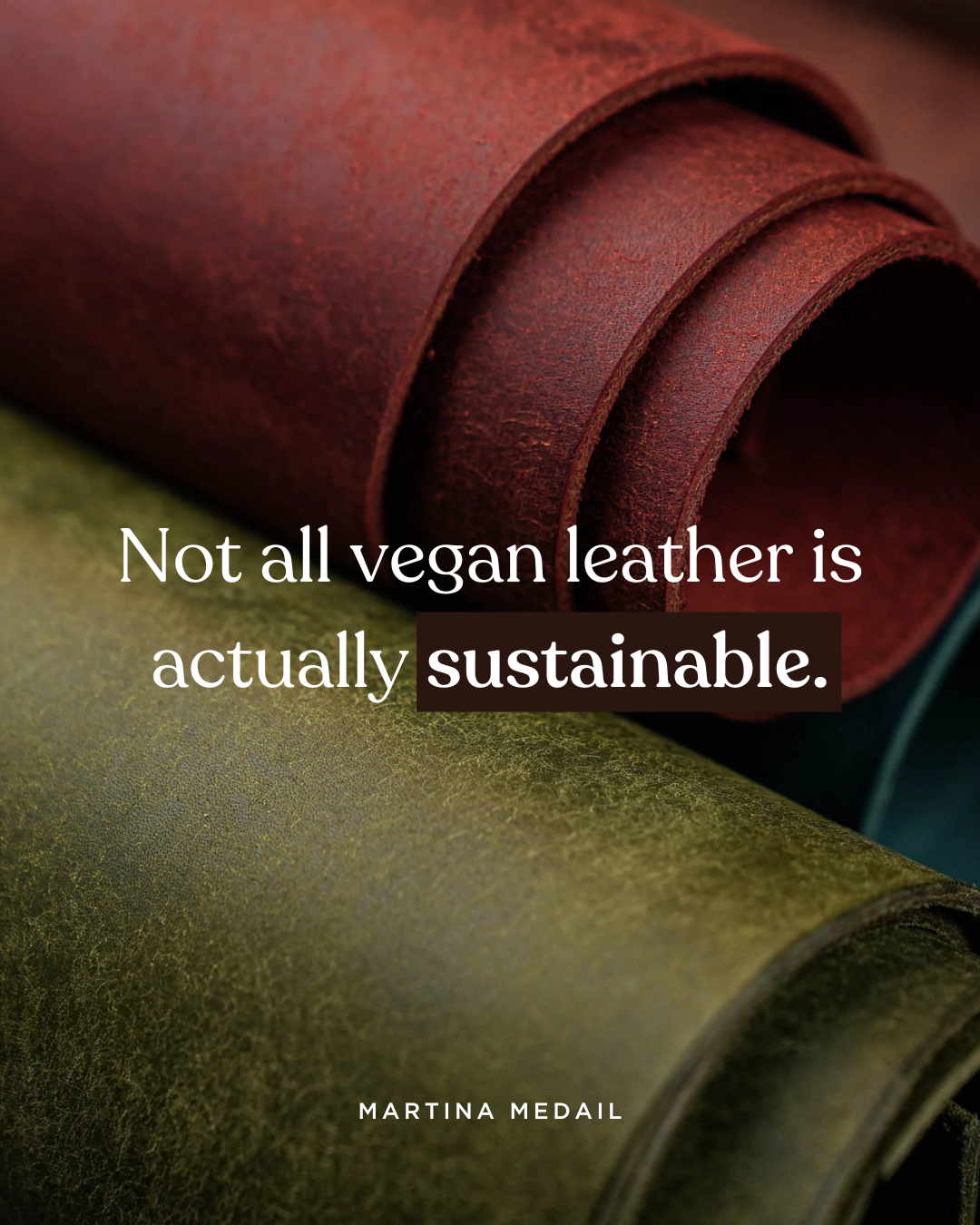
Not all vegan leather is actually sustainable
Vegan leather is just an umbrella term.
It includes two main types. The first is plastic-based vegan leathers, such as PU (polyurethane) and PVC (polyvinyl chloride), which are 100% synthetic materials.
The second type is bio-based vegan leather, made from agricultural waste like pineapple, apple, or grape peels. However, even bio-based leather still contains synthetic components, making it a mix of plant-based and plastic materials.
This raises an important question: Is bio-based leather truly a more sustainable option, or does traditional vegetable-tanned leather offer a better alternative?
The pros of vegetable-tanned leather:
Natural and durable: Made from animal hides, a by-product of the food industry, reducing waste. Can last decades if well cared for.
Biodegradable: If untreated with synthetic coatings, it naturally decomposes over time.
Supports craftsmanship: Often produced using traditional, local techniques.
Repairable: Unlike synthetic materials, it can be easily restored, extending its lifespan.
The cons of vegetable-tanned leather:
Uses animal resources: Since it's derived from hides, it's not vegan and may conflict with cruelty-free values.
Slow biodegradation: If finished with synthetic dyes or coatings, it loses some biodegradability.
Water and energy impact: Livestock farming and tanning requires significant water and energy resources.
The pros of bio-based vegan leather:
Uses food waste: Made from discarded apple, pineapple, grape peels, reducing agricultural waste.
Cruelty-free: No animals involved, making it a vegan-friendly option.
Lower water and chemical use: Requires fewer resources than traditional leather tanning.
Encourages material innovation: Supports the development of new, plant-based alternatives.
The cons of bio-based vegan leather:
Contains Plastic: Up to 50% polyurethane (PU), which is a petroleum-based plastic.
Less Durable: Bio-based leather is not as strong as animal leather and may degrade faster.
Difficult to dispose of: since it's part synthetic, it doesn't fully biodegrade and can break down into microplastics.
So, which one is more sustainable?
If you prioritize durability and craftsmanship vegetable-tanned leather is a better choice. It lasts for decades, is repairable, and aligns with a slow fashion mindset.
If you prefer cruelty-free materials bio-based leather is an innovative, plant-based alternative, but it still contains plastic and has a shorter lifespan.
Sustainability is about trade-offs. There's no one perfect option - it all depends on your values and priorities.
Which one do YOU think is the better choice?
Let us know in the comments!


Laisser un commentaire
Ce site est protégé par hCaptcha, et la Politique de confidentialité et les Conditions de service de hCaptcha s’appliquent.